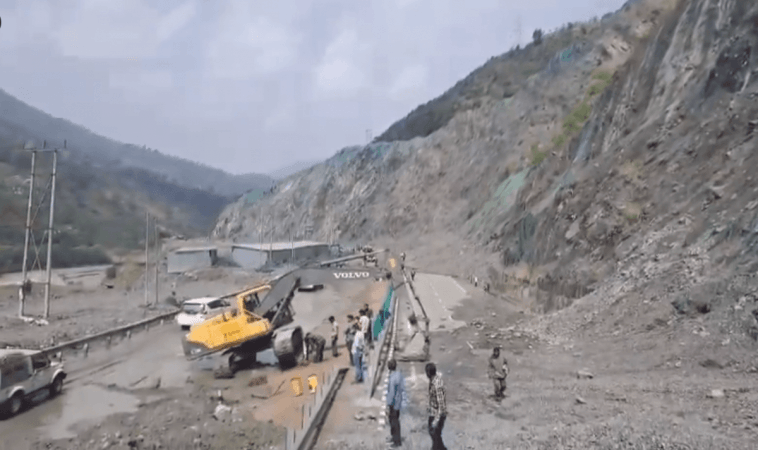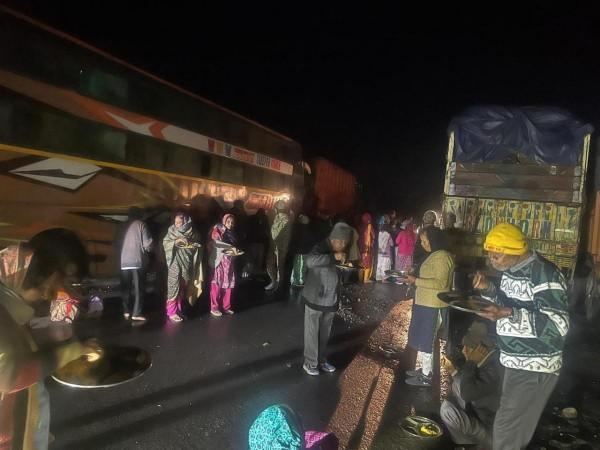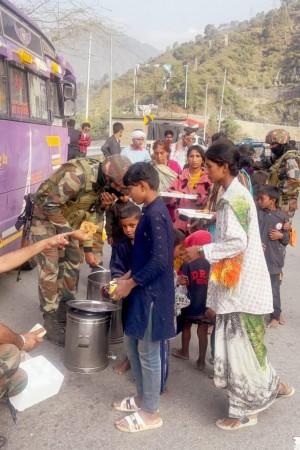
Although restoration work is underway on a war footing, traffic on the strategically important Jammu-Srinagar National Highway is likely to be fully restored within a week's time, as massive mud deposits have accumulated at several locations along the 20-kilometer stretch between Ramban and Ramsoo.
For the second consecutive day, traffic remained suspended on the highway, with hundreds of vehicles stranded at various locations due to road blockages.
On Sunday, the Jammu-Srinagar National Highway was closed following heavy downpours and cloudbursts, which triggered flash floods and landslides in the Ramban district.
Quoting the Project Director of the National Highways Authority of India (NHAI), Purshottam Kumar, some reports stated that the agency is facing significant challenges in restoring traffic due to massive mud deposits at over twenty locations, especially along the four-kilometer stretch between Seri and Maroog. At some spots, the sludge is more than 20 feet deep, making clearance efforts extremely difficult.

Much of the agency's heavy machinery, including earthmovers, has been buried under the debris.
"Despite our limited resources, we have arranged additional machinery from private contractors and deployed them at 20 affected sites simultaneously to expedite the restoration work," Kumar told the media, expressing relief at the improvement in weather conditions after two days of heavy rain.
However, Kumar noted that it could take five to six days to reopen the highway for traffic. The road has sustained major damage, particularly near Panthiyal and Kela Morh.

Hundreds of vehicles stranded on highway
Hundreds of vehicles, including a large number of tourist cabs, have been stranded on the Jammu-Srinagar National Highway due to the closure. With little hope of the road reopening in the next three to four days, many stranded commuters have begun walking to their destinations.
Meanwhile, in response to the cloudburst and intense rainfall that hit the Ramban district, the Indian Army has launched swift and coordinated relief and restoration operations to assist affected civilians and restore connectivity along the highway.
Upon assessing the ground situation, the Army initiated immediate action in coordination with civil administration officials, including the District Commissioner, Senior Superintendent of Police, and the Superintendent of Traffic. Although no emergency requisition has been made so far, civil authorities have assured they will request Army assistance if needed.

Quick Reaction Teams (QRTs) from Banihal, Karachial, Digdaul, Maitra, and Chanderkote were rapidly mobilised to assist stranded travelers. Army personnel provided support by distributing tea and hot meals, offering temporary shelter, and administering basic medical aid.
Eight Army columns (with a strength of 1/1/18 each) are currently on standby at key locations, ready to assist further if required. Meanwhile, JCBs and heavy machinery from civilian construction firms, including KRCL, CPPL, and DMR, have commenced clearing operations along the obstructed highway.
The Indian Army remains steadfast in its commitment to support the citizens of Jammu and Kashmir in times of crisis, ensuring their safety, support, and timely assistance.












